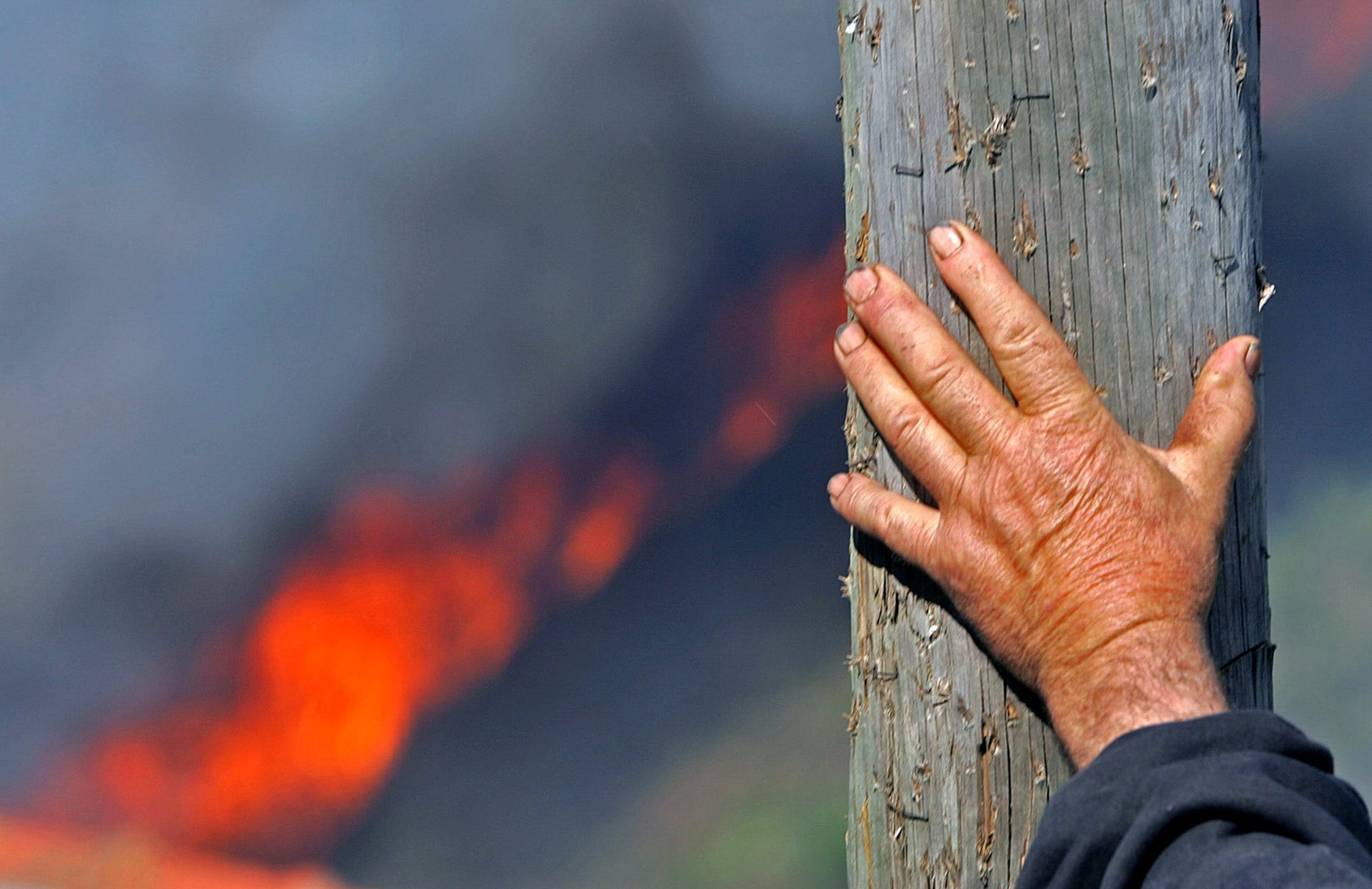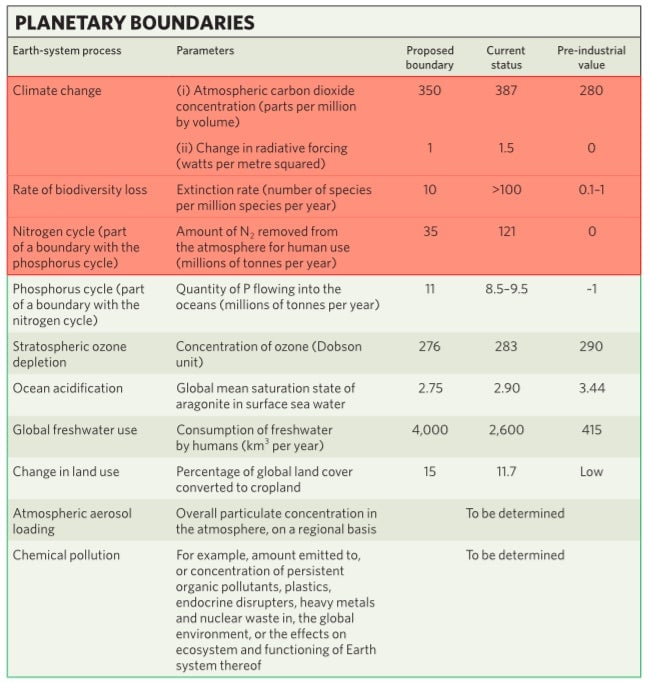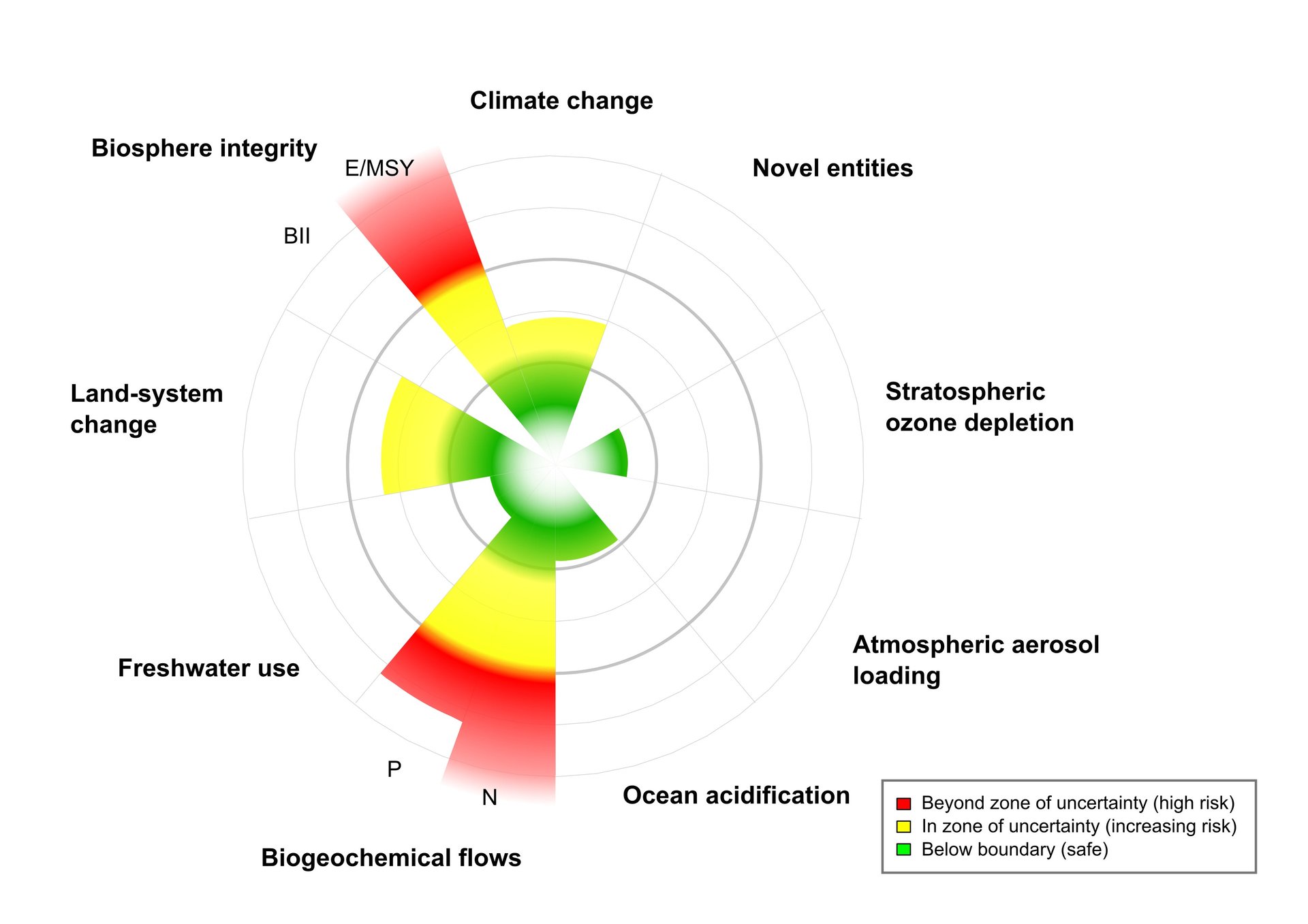We’ve crossed four of the nine boundaries supposedly separating us from planetary destruction
In 2009, climate scientists devised a framework to monitor Earth’s vital signs based on nine “planetary boundaries” within which human civilization can continue to thrive. Three of the nine boundaries had already been crossed: There was too much carbon dioxide in the atmosphere, too much nitrogen had been removed from the atmosphere, and biodiversity was declining too quickly. Let’s keep an eye on all of these measures, they said (paywall), to predict when our time here might expire.


In 2009, climate scientists devised a framework to monitor Earth’s vital signs based on nine “planetary boundaries” within which human civilization can continue to thrive. Three of the nine boundaries had already been crossed: There was too much carbon dioxide in the atmosphere, too much nitrogen had been removed from the atmosphere, and biodiversity was declining too quickly. Let’s keep an eye on all of these measures, they said (paywall), to predict when our time here might expire.

This month the same team of researchers—30 individuals from 19 academic institutions, in collaboration with the Stockholm Resilience Centre—published an update saying that a fourth boundary has been crossed, the one about “change in land use,” also known as deforestation. Too much vegetation has been cleared for agricultural use.

In a 2010 TED Talk, Johan Rockström, the director of the Stockholm Resilience Centre, prefaced his explanation of the planetary boundary framework by saying, “We need to abandon our old paradigm, that ecosystems behave linearly, predictably, controllably,” because in fact, “systems tip over very rapidly, abruptly, and often irreversibly.” He said the goal of the planetary boundary study was to identify earth systems in which “we may expect non-linear change,” and at what points those non-linear changes may be triggered. The findings were alarming, yes, but he saw reasons for optimism: “We’re the first generation—thanks to science—to be informed that we may be undermining the stability and the ability of planet Earth to support human development as we know it.”
Rockström will present the updated research at Davos this week.